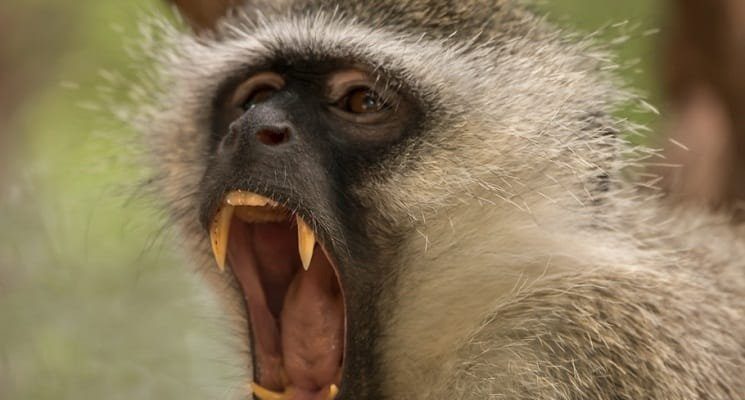
Vervet monkeys belong to the Cercopithecidae family, which includes several other types of monkeys. They primarily thrive in Africa, adapting to a variety of environments. Wouldn’t it be interesting to explore the different landscapes they inhabit? From savannas to woodlands, vervet monkeys have a surprising range of habitats that help them survive and thrive.
Overview of Vervet Monkeys
Vervet monkeys, scientifically known as *Chlorocebus pygerythrus*, are medium-sized primates with distinctive features. They have a grayish coat, long tails, and expressive faces that can show a range of emotions, often making them quite relatable to us humans. Their social structure is fascinating, as they live in groups called troops that can range from 10 to 50 members. Troops are usually led by a dominant male, but females often play a crucial role in their social dynamics.
These monkeys are also known for their impressive vocalizations. They use different calls to signal various threats, such as the arrival of a predator. Isn’t it amazing how these little creatures have developed a complex communication system to protect each other? This social behavior is essential for their survival and helps maintain group cohesion.
Natural Habitat of Vervet Monkeys
Vervet monkeys are highly adaptable and can thrive in several types of habitats. Their primary homes include:
- Savanna: This open grassland is where vervet monkeys are most commonly found. The presence of trees provides them with shelter and a place to forage.
- Woodlands: They also enjoy wooded areas, which offer shade and a variety of fruits and leaves to munch on.
- Urban Areas: Surprisingly, vervet monkeys have been known to adapt to urban environments, scavenging for food in parks and human settlements.
Their ability to thrive in diverse regions is quite remarkable. For instance, in savanna habitats, they can easily find food sources like fruits, seeds, and insects in the trees. In contrast, woodland areas provide them with a more shaded environment, perfect for regulating their body temperature.
Geographical Distribution
Vervet monkeys are primarily distributed across sub-Saharan Africa. Their range includes countries such as:
- South Africa
- Kenya
- Tanzania
- Uganda
- Namibia
Their adaptability has allowed them to spread into various regions, from the lowland forests to the drier regions. You might be wondering how these monkeys manage to survive in such different climates. Well, their diets change based on food availability, and they can travel over considerable distances to find resources.
Impact of Habitat Loss
Unfortunately, vervet monkeys face significant challenges due to habitat loss. As humans expand agriculture or develop land for cities, many of these monkeys lose their natural homes. Deforestation and urbanization lead to fragmented habitats, making it harder for them to find food and mates.
Living in closer proximity to humans can create conflict as these monkeys sometimes raid crops or scavenge for food in garbage. Honestly, it’s a tough situation for both the monkeys and the farmers. The delicate balance between urban development and wildlife preservation is a constant struggle.
Conservation Efforts
Protecting vervet monkeys and their habitats is crucial for the overall health of the ecosystem. Many organizations work to create wildlife reserves and educate communities about coexisting with these fascinating creatures. By raising awareness, locals can learn to respect and protect their natural environment, which ultimately benefits vervet monkeys.
Additionally, eco-tourism initiatives can help support conservation efforts. When people visit these monkeys in their natural habitat, it generates funds for protecting the land they live on. Isn’t it wonderful how we can connect our love for nature with aiding in conservation?
Human Interaction with Vervet Monkeys
As vervet monkeys become more accustomed to human environments, their behavior can change dramatically. Most people find them amusing and clever, but it’s essential to remember that they are still wild animals. Feeding them can lead to dependency on humans for food, disrupting their natural foraging behaviors.
It’s often recommended that communities and visitors create ‘monkey-proof’ areas for their own safety and to protect the monkeys from harmful human interactions. Simple actions, like securing trash cans and not leaving food out, can significantly contribute to a healthier coexistence with these lively primates.
Vervet monkeys are a testament to nature’s adaptability, thriving in various habitats across Africa. Their journey is woven into the fabric of the ecosystems they inhabit. As we continue to learn about where vervet monkeys live and how they adapt, we also uncover the importance of preserving their environments.
By understanding their distribution and the challenges they face, we can work towards more sustainable interactions with these charming creatures. Ultimately, it’s about finding harmony between preserving wildlife and embracing modern life. So, next time you think about vervet monkeys, remember the vibrant landscapes they call home and the role we all play in protecting their future.

